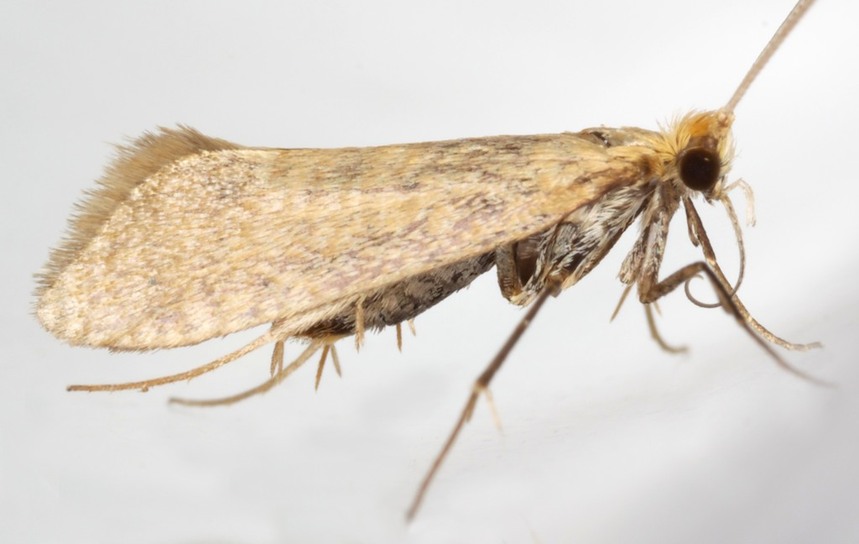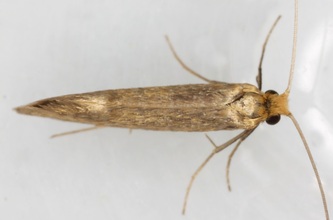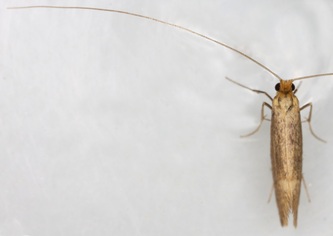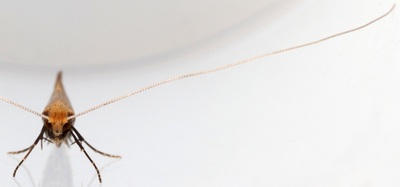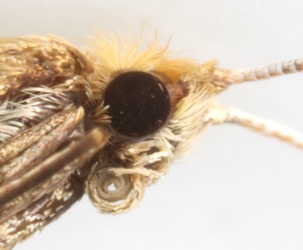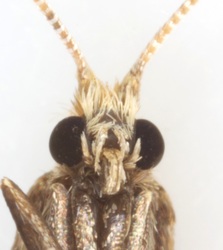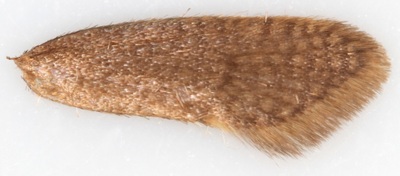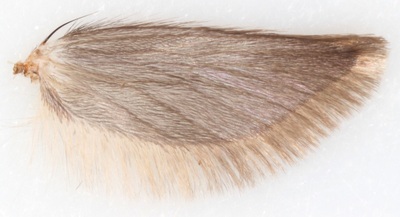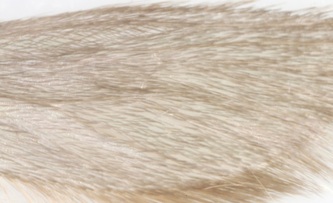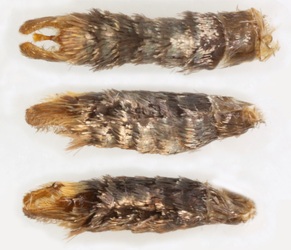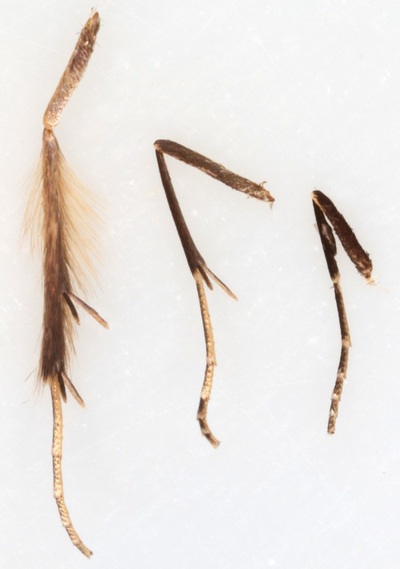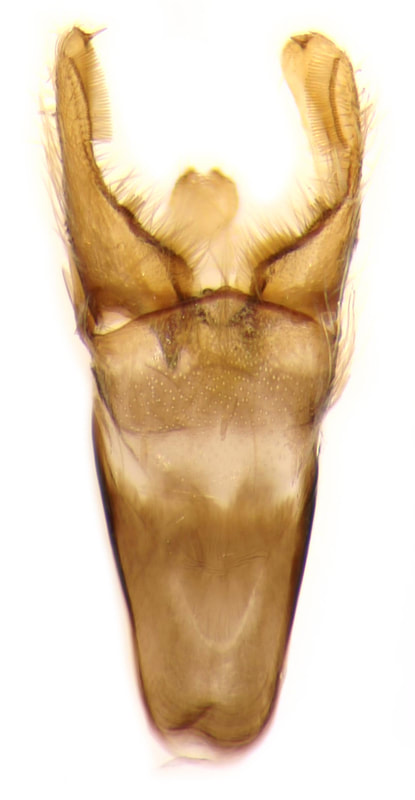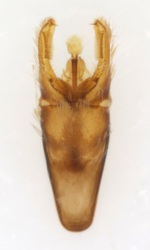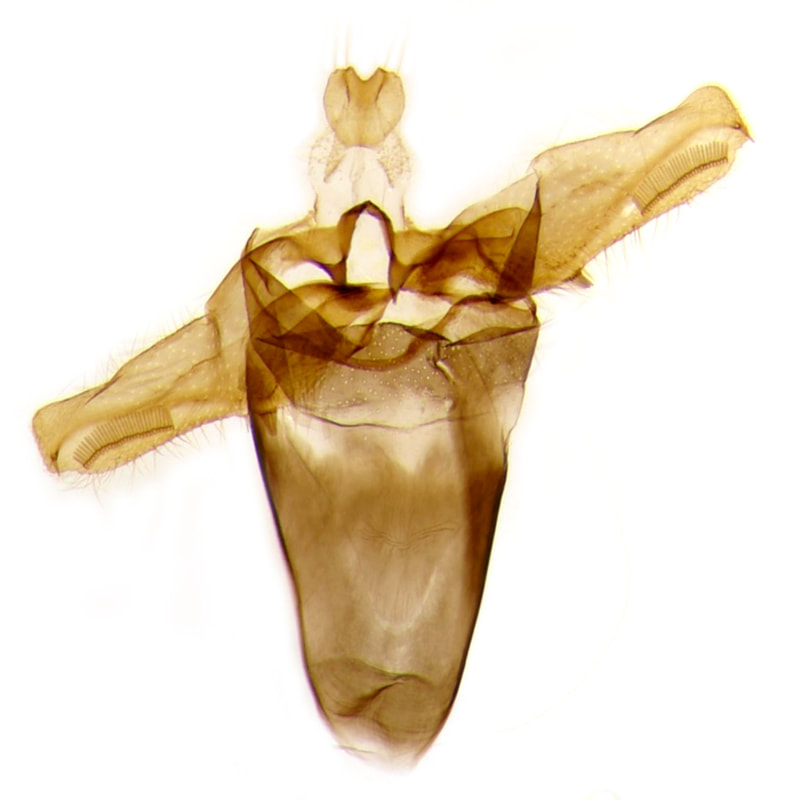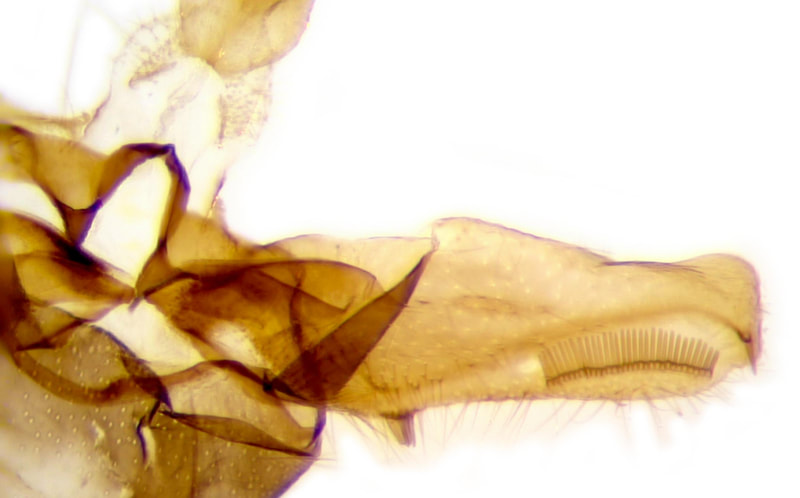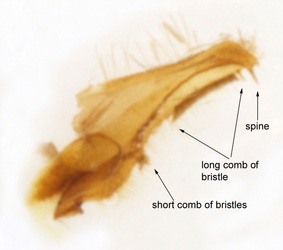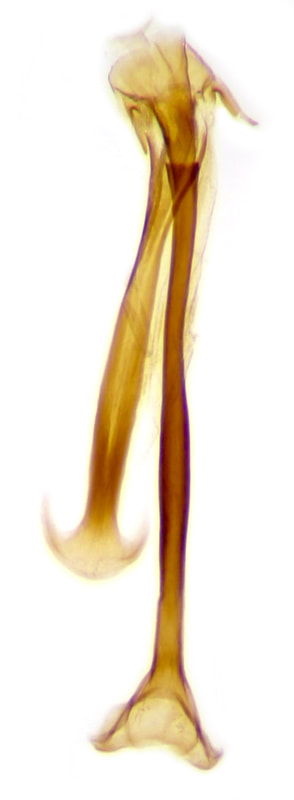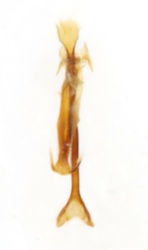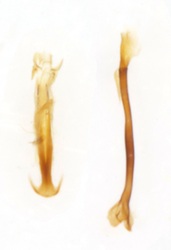07.012 Nematopogon schwarziellus (Sandy Longhorn)
ws: 14-17mm; May-Jun; larva feeds on dead leaves; common in woodland and more open habitats throughout UK
ID: Hindwing narrow scales widely distributed; fw pale ochreous (not greyish ochreous); ws 14-17mm (fw 7-8mm) > N.schwarziellus ♂
The male hindwing has uniformly narrow scales, the female has a marginal band of broader scales.
Very similar to N.metaxella which has a similar colouring and size. Males can be reliably distinguished by N.metaxella having the narrow hindwing scales confined to the basal half. The undissected ♂ moth may also be distinguishable on the basis that the antenna of N.metaxella is entirely white, while that of N.schwarziellus has ochreous bars (which may be confined to the underside). In material I have examined so far ♀ N.metaxella does show ochreous antennal barring.
Other features that are said to differ between the species appear to be unreliable: The forewing of N.metazella is said to have a more acutely angled apex and less prominent reticulation. The frons of N.schwarziellus is said to be whitish contrasting with the ochreous vertex, while in N.metaxella both frons and vertex are ochreous - possibly it is more true to say that where there is such a contrast the species is N.schwarziellus, but I have found specimens of N.schwarziellus with an entirely ochreous head, so N.metaxella cannot be identified on this feature.
Male genitalia: N.schwarziellus has a small spine at the apex of the valva, absent in all other Nematopogon species.
Female genitalia: N.schwarziellus and N.metaxella are both shown at Moth Dissection. The key distinction on comparing these images is in the apex of the ovipositor which is acutely pointed in N.metaxella and squared off with a small central nipple in N.schwarziellus.
The male hindwing has uniformly narrow scales, the female has a marginal band of broader scales.
Very similar to N.metaxella which has a similar colouring and size. Males can be reliably distinguished by N.metaxella having the narrow hindwing scales confined to the basal half. The undissected ♂ moth may also be distinguishable on the basis that the antenna of N.metaxella is entirely white, while that of N.schwarziellus has ochreous bars (which may be confined to the underside). In material I have examined so far ♀ N.metaxella does show ochreous antennal barring.
Other features that are said to differ between the species appear to be unreliable: The forewing of N.metazella is said to have a more acutely angled apex and less prominent reticulation. The frons of N.schwarziellus is said to be whitish contrasting with the ochreous vertex, while in N.metaxella both frons and vertex are ochreous - possibly it is more true to say that where there is such a contrast the species is N.schwarziellus, but I have found specimens of N.schwarziellus with an entirely ochreous head, so N.metaxella cannot be identified on this feature.
Male genitalia: N.schwarziellus has a small spine at the apex of the valva, absent in all other Nematopogon species.
Female genitalia: N.schwarziellus and N.metaxella are both shown at Moth Dissection. The key distinction on comparing these images is in the apex of the ovipositor which is acutely pointed in N.metaxella and squared off with a small central nipple in N.schwarziellus.
§1 Whiteshill, Gloucestershire; 13/05/2011; male; fw 7.1mm
§2 Removed (misidentification)
§3 Noar Hill, Hampshire; 18/05/2014; male; fw 7.8mm
§4 Strumpshaw Fen, Norfolk; 25/05/2018; male; fw 7.1mm
All images © Chris Lewis
§2 Removed (misidentification)
§3 Noar Hill, Hampshire; 18/05/2014; male; fw 7.8mm
§4 Strumpshaw Fen, Norfolk; 25/05/2018; male; fw 7.1mm
All images © Chris Lewis
Page published Aug 2011 | §2 added 15/06/2012 | §3 added 26/05/2014 | §4 added 10/03/2019 | mis-identified females removed and text amended 13/11/2021
